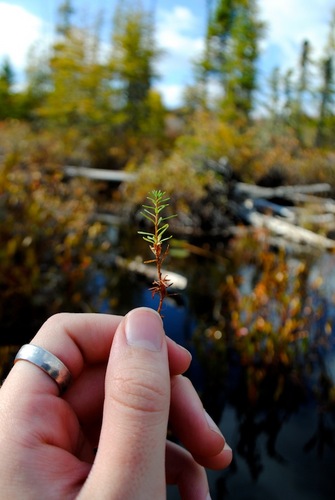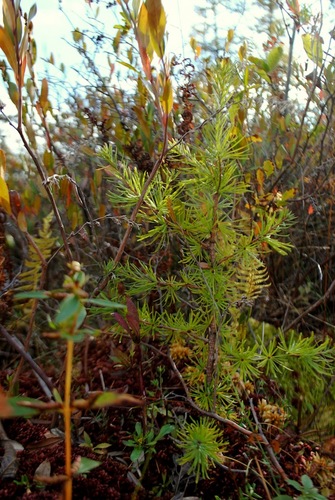Tamarack : Lifecycle
It is autumn. As the needles of the tamarack are turning yellow and falling from the tree, the cones that were pollinated in the spring and that matured over the summer are now ready to drop, containing the seeds of the next generation. Since the seeds are small and light, they travel by wind away from the parent tree. Once they have landed in their final spot, they will remain there until winter comes, allowing for their dormancy to be broken. These seeds will germinate in the spring and early summer, from late May to mid June (assuming that they are not consumed by animals.)
In order to have a chance at survival, the seedlings that are developing need abundant sunlight. Provided this condition, they can reach 7-9 inches in their first year. Growth of a tamarack depends greatly on the level of moisture in the soils: if the tree is in a saturated environment, growth will be slow; in a well-drained environment, growth is quick. At maturity, a tamarack can be 50-75 ft tall with a DBH (diameter at breast height) of 14-20 inches. They live between 150-180 years.


